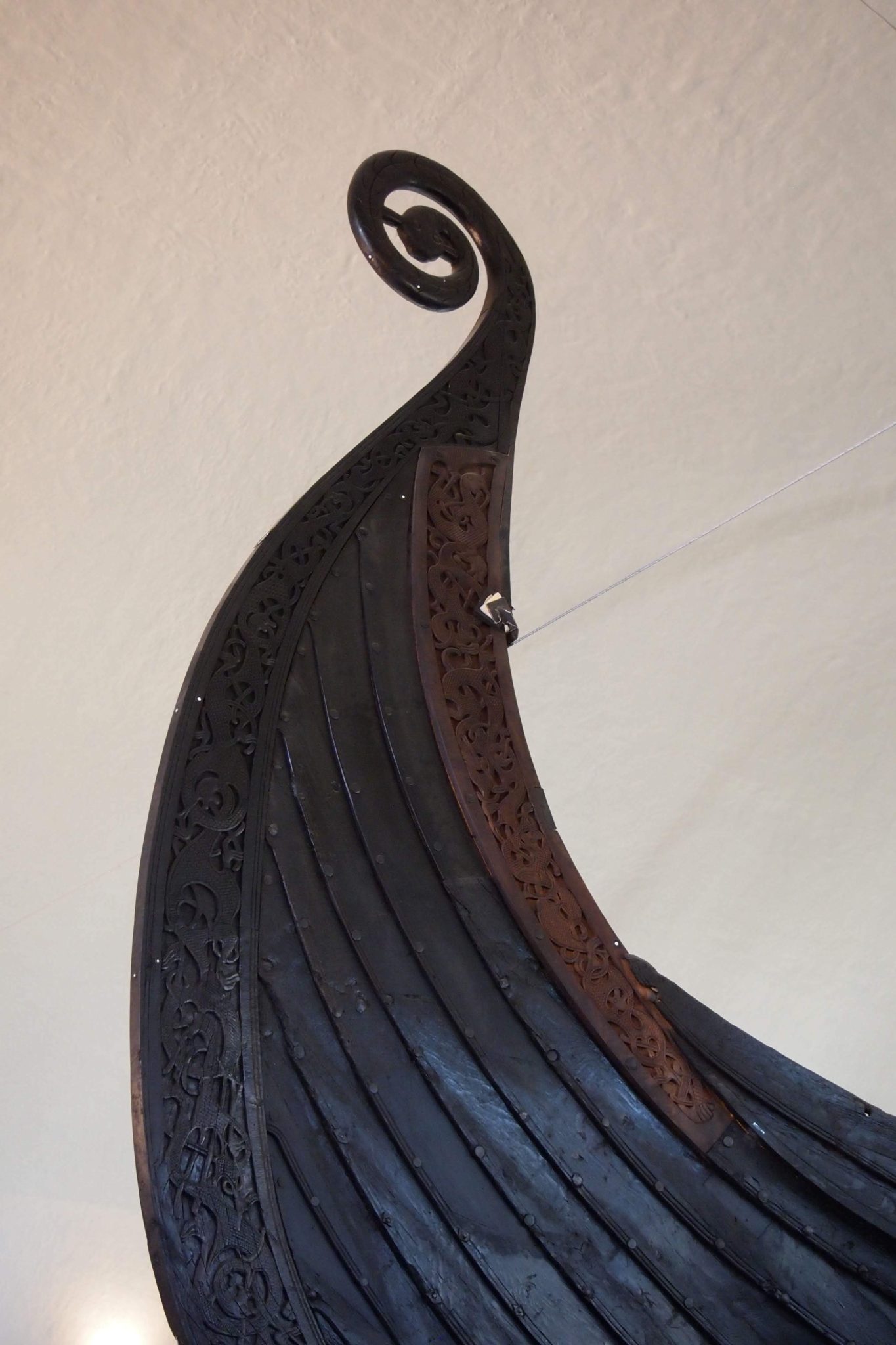On our second day in Oslo, we visited the Viking Ship Museum (Vikingskipshuset) on the Bygdøy peninsula. When we planned our Norway itinerary, my daughter and I both picked a couple of must-see items that we would accomplish no matter what. The Viking Ship Museum was my first pick. I’ve been to several exhibits of authentic Viking-age artifacts, but boats are (ironically) not so mobile. So the closest I’d gotten to a real Viking ship was the Gokstad reproduction at Viking World in Iceland. Íslendingur is awesome, but the Viking Ship Museum in Oslo displays the actual Gokstad ship.
Getting There
It’s worth just dedicating an entire day to museums on Bygdøy (or two, since most museums seem to only be open from 10-4 and you can’t fit them all in that window). Bygdøy is called an island, but it’s really a peninsula. You can just drive or take the bus to get there. But it’s more fun (and faster) to take the ferry from the downtown Oslo harbor.
We caught the second ferry of the day at City Hall Pier 3 (tickets were free with our Oslo Passes) and got off at the Dronningen stop. From there it was about a 10-minute walk to the museum through a quiet neighborhood of fancy houses.
Oseberg Ship
The Viking Ship Museum houses three authentic Viking ships that were used to bury their wealthy owners together with the grave goods contained in the ships. The Oseberg ship is the largest of the three and arguably the finest Viking Age find (a farmer dug into it in 1903). Built in Norway around 820 A.D., the clinker-built oak ship had room for 30 oarsmen and was richly ornamented.

The Oseberg ship probably sailed along the coast and up rivers in Southern Norway before being pulled ashore to bury two high-ranking women. One was in her fifties and the other was in her seventies. They were buried on a bed in the ship, along with the richest trove of Viking era grave goods ever found. Whoever they were, at least one of them was extremely important. The grave goods include a functional sled and a highly ornamented horse cart. The Oseberg ship is also notable for being the source of most of the textile remains from the Viking age.

Gokstad Ship
In 1879 two teenagers dug into “The King’s Mound” on their farm to see if there was really anything buried there. They discovered the grave of a Viking king (or an important chieftain, at least) who was buried around 900 A.D. The chieftain was not as wealthy as the Oseberg women, but his burial gifts were still extensive, including shields, small boats, and exotic animals. Compared to Oseberg, the ship is less extravagant in ornamentation, but bigger in size.

It was used for ocean voyages until the chieftain was killed in battle. (This is why they modeled Íslendingur after Gokstad instead of the more famous Oseberg.) Having walked around on its replica in Iceland made the relatively plain Gokstad ship more interesting. It was easier to imaging the ship fitted out with sails and shields, ready to cross the ocean and devastate monasteries.
Tune Ship
A farmer found the Tune ship in 1867. It was the first Viking ship to be excavated and is still one of the best-preserved Viking ships in the world. But compared to the other two it mostly serves to illustrate just how amazing the Oseberg and Gokstad ships really are. Not only is the ship itself less complete, but the grave was plundered and the remaining goods are not in great condition.

All This and More
Even though I’ve already seen a lot of Viking artifacts, the items at the Viking Ship Museum are quite unusual. There wasn’t a lot of overlap with other exhibits, so I still felt like I learned a lot – for example, I always wondered what Viking shoes looked like, and now I know. There were several documentaries on loop in the museum, including one about textiles, which was all new information for me.

A normal person with only a passing interest in the Viking age would probably be satisfied with half an hour in the museum. But I had to read every single plaque and watch every film in its entirety. We spent well over two hours there, not counting the gift ship, where many items were purchased. I have no regrets.

A Penny Saved
We visited the museum using our Oslo Passes, which more than paid for themselves on our museum-focused itinerary. But if you’re only going to visit a couple of museums, your ticket from the Viking Ship Museum grants free entry to the Historical Museum, Norway’s largest collection of historical artifacts, including Viking treasures, Egyptian mummies and a multitude of ethnographic exhibitions, within 48 hours.



About the author